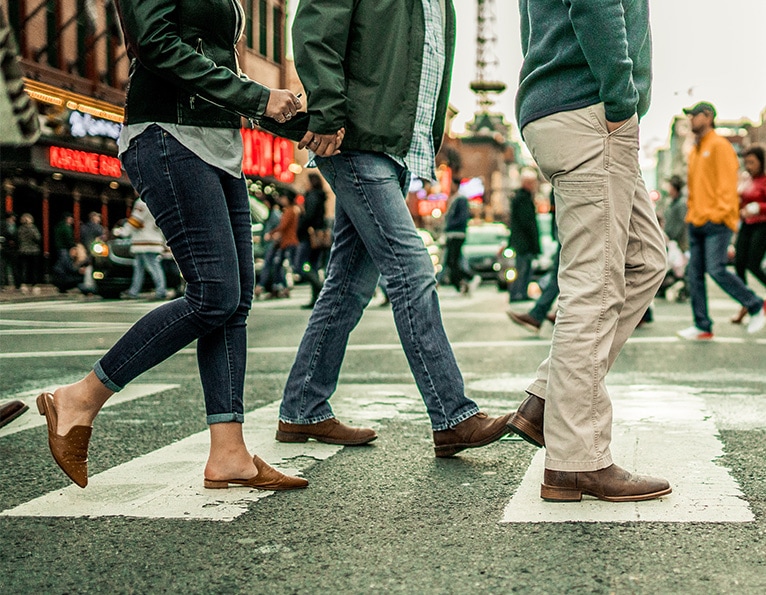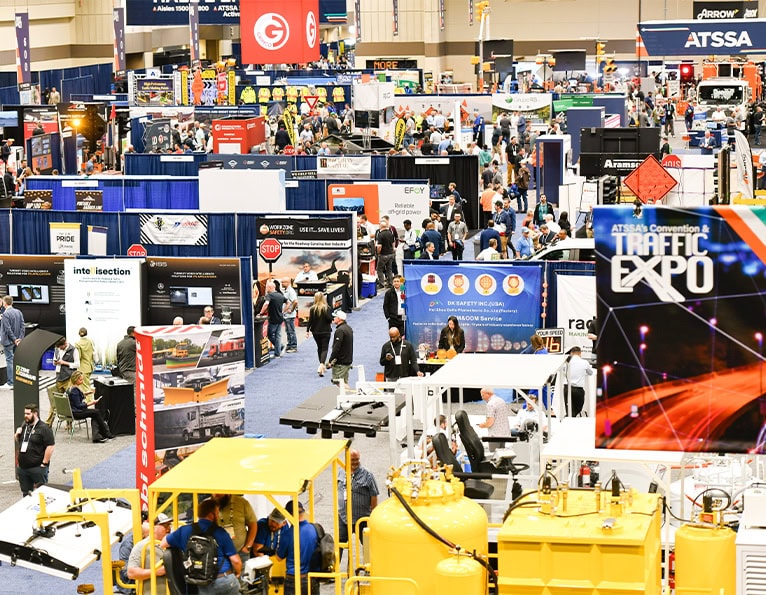Latest updates
ATSSA & NCUTCD urge publication of MUTCD without delay
The National Committee on Uniform Traffic Control Devices NCUTCD passed a resolution today recommending the final rule on the Manual on Uniform Traffic Control Devices MUTCD not be delayed to address this week’s issuance of a final rule for pedestrian accessibility issues. The U.S. Access Board on Tuesday issued its final rule providing minimum guidelines for accessibility of pedestrian facilities in the public right-of-way, known as PROWAG. On May 2, ATSSA President & CEO Stacy Tetschner sent a letter to Federal Highway Administration Administrator Shailen P. Bhatt urging the FHWA to publish the updated Manual on Uniform Traffic Control Devices MUTCD by the deadline set forth in the U.S. Code, which was May 15. ATSSA voted in favor of today’s resolution passed by the NCUTCD. The National Committee on Uniform Traffic Control Devices NCUTCD passed a resolution today recommending the final rule on the Manual on Uniform Traffic Control Devices MUTCD not be delayed to address this week’s issuance of a final rule for pedestrian accessibility issues. The U.S. Access Board on Tuesday issued its final rule providing minimum guidelines for accessibility of pedestrian facilities in the public right-of-way, known as PROWAG. On May 2, ATSSA President & CEO Stacy Tetschner sent a letter to Federal Highway Administration Administrator Shailen P. Bhatt urging the FHWA to publish the updated Manual on Uniform Traffic Control Devices MUTCD by the deadline set forth in the U.S. Code, which was May 15. Roadway safety advocates have been watching for its release since then. ATSSA voted in favor of today’s resolution passed by the NCUTCD. The resolution states that the NCUTCD “recommends the final rule for the 11th edition of the MUTCD be published quickly and not be delayed due to PROWAG or other issues not addressed in the December 14, 2020 [Notice of Proposed Amendments].” Rather than incorporate changes from PROWAG into the release of the 11th edition, today’s resolution recommends a separate rulemaking effort be undertaken for that process. The resolution notes that the NCUTCD “represents 21 sponsoring organizations representing a wide range of transportation stakeholders, and uses a strong consensus-building approach to develop recommendations for traffic control device standards and guides.” It also notes that the Infrastructure Investment & Jobs Act IIJA states that Secretary of Transportation Pete Buttigieg must provide updates necessary to provide for “any additional recommendations made by the National Committee on Uniform Traffic Control Devices that have not been incorporated into the Manual on Uniform Traffic Control Devices.”
Integrating wildlife patterns into roadway plans helps save lives
With elk, mule deer and pronghorn antelope among the many animals trekking across Wyoming, the state’s Department of Transportation knows the importance of being attuned to their daily movements and seasonal migrations. That information is factored into new road projects to help save the lives of both humans and animals. The Wildlife Crossings Pilot Program included as part of the Infrastructure Investment & Jobs Act IIJA is a new source of funding available to aid such mitigation efforts. The Summer issue of ATSSA’s Roadway Safety magazine, now available online, lays out the cost of human-animal collisions across the nation and examines the details of the program to help members understand how they can become involved. Check out this article and more in the latest issue of Roadway Safety magazine. With elk, mule deer and pronghorn antelope among the many animals trekking across Wyoming, the state’s Department of Transportation knows the importance of being attuned to their daily movements and seasonal migrations. That information is factored into new road projects to help save the lives of both humans and animals. The Wildlife Crossings Pilot Program included as part of the Infrastructure Investment & Jobs Act IIJA is a new source of funding available to aid such mitigation efforts. The Summer issue of ATSSA’s Roadway Safety magazine, now available online, lays out the cost of human-animal collisions across the nation and examines the details of the program to help members understand how they can become involved. The Summer issue also explores: How cellular vehicle-to-everything technology C-V2X is taking shape in this pivotal year. How the Federal Communications Commission FCC decision to approve a joint waiver for a group of automakers, public agencies and communication professionals is moving C-V2X into action where it can demonstrate lifesaving benefits. The many ways members observed National Work Zone Awareness Week this year. Details of how three innovative tools advance roadway safety. Check out these features and more in the latest issue of Roadway Safety magazine.
Final rule issued for accessibility of pedestrian facilities in public right-of-way
The Architectural and Transportation Barriers Compliance Board Access Board today issued its final rule providing minimum guidelines for accessibility of pedestrian facilities in the public right-of-way, known as PROWAG. These final guidelines have been long awaited, in particular by state and local governments that have sought them for more than 30 years. The final rule for PROWAG was published in the Federal Register and is effective Sept. 7. Once adopted, the guidelines “would ensure that facilities used by pedestrians, such as sidewalks and crosswalks, constructed or altered in the public right-of-way by federal, state, and local governments are readily accessible to and usable by pedestrians with disabilities,” according to the posting. The Architectural and Transportation Barriers Compliance Board Access Board today issued its final rule providing minimum guidelines for accessibility of pedestrian facilities in the public right-of-way, known as PROWAG. These final guidelines have been long awaited, in particular by state and local governments that have sought them for more than 30 years. The final rule for PROWAG was published in the Federal Register and is effective Sept. 7. Once adopted, the guidelines “would ensure that facilities used by pedestrians, such as sidewalks and crosswalks, constructed or altered in the public right-of-way by federal, state, and local governments are readily accessible to and usable by pedestrians with disabilities,” according to the posting. The guidelines apply, at minimum, to state and local government facilities. The guidelines address features of the following pedestrian facilities: Pedestrian access routes Alternate pedestrian access routes Accessible pedestrian signals Crosswalks Transit stops On-street parking. ATSSA’s Innovation & Technical Services Team attended the National Committee on Uniform Traffic Control Devices NCUTCD summer meeting where the rulemaking’s progress was discussed. The final rule will impact the Manual on Uniform Traffic Control Devices MUTCD. The U.S. Access Board is an independent federal agency that promotes accessible design. As mentioned in the team’s blog from that meeting, following issuance of the final rule, the U.S. Department of Transportation USDOT and the U.S. Department of Justice must conduct rulemaking procedures to adopt PROWAG into federal regulations. After that step, FHWA will conduct another rulemaking to address revisions needed in the MUTCD to adopt relevant aspects of PROWAG. The following is a snapshot of the significant changes in the final rule text from the versions proposed in the previous versions of the rule, which include: Three major changes in the way alterations are treated in the final rule Facilities and portions of facilities that are “added” to an existing, developed public right-of-way are “alterations” Altered facilities must be connected to an existing pedestrian circulation path by a pedestrian access route. MUTCD provisions are not incorporated by reference. Alterations that trigger installation of accessible pedestrian signals Expanded crosswalk treatments options at roundabouts. For additional information on the PROWAG final rule, contact Scott Windley, Office of Technical and Information Services, Architectural and Transportation Barriers Compliance Board, 1331 F Street NW, Suite 1000, Washington, D.C. 20004–1111. Telephone 202 272–0025 voice or 202 272–0028 TTY. Email: row@access-board.gov.
Upcoming Events
Midyear Meeting 2025
Join us Aug. 19-22, 2025, in Milwaukee, Wis., for the Midyear Meeting. ATSSA members hold committee & council meetings, discuss industry issues & advance roadway safety.
2026 Convention & Traffic Expo
Where Roadway Safety + Innovation Intersect. ATSSA’s 56th Annual Convention & Traffic Expo is Feb. 20-24, 2026, in Houston, Texas. Join key roadway safety and transportation professionals at this premier event.
Visit ATSSA at booth #EH2316 during Utility Expo 2025 in Louisville.
TOOLS & RESOURCES
Easily find content, tools or products in the Resource Library. Search industry, legal and volunteer resources; products, toolkits and publications for industry professionals, past webinars and more. Get the ATSSA Worker Protection Toolkit for resources on incident response and prevention.
ATSSA Community
As a member of ATSSA, you become part of a vibrant community made up of thousands of roadway safety infrastructure professionals. Explore ways of connecting with your professional community through chapters and volunteer leadership and access quick links to the most popular member resources.
Innovation and Technical Services
ATSSA is dedicated to being a reliable and accurate source of innovative technology information for all members. As the industry moves towards an automated and more technologically advanced future, prepare and learn from best practices and resources related to traffic safety topics and technical services.
North America’s top roadway safety event
Join thousands of roadway safety and transportation professionals at ATSSA’s 56th Annual Convention & Traffic Expo, Feb. 20-24, 2026, in Houston, Texas. Connect with industry leaders, explore the latest safety solutions and drive innovation.
ATSSA's core purpose is to advance roadway safety. ATSSA members embrace the goal of eliminating roadway fatalities through the design, manufacture and installation of road safety and traffic control devices. For more than 50 years, ATSSA’s training has been recognized as the highest quality roadway safety training program available. Get top training for your team.





